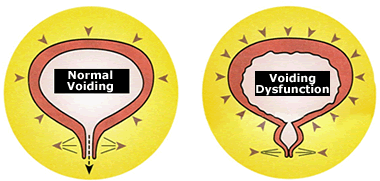
Urinary Bladder Cancer
Urinary Bladder cancer is one of the commonest urological cancers, second only to prostate cancer in incidence. Presentation of this condition is with bloody urine, which can be scary for the patients. Bloody urine associated with bladder cancer is usually painless and can be associated with passage of clots or tissue bits. It is extremely important to ensure timely consultation and treatment for bladder cancer because the longer the time is lost between presentation and treatment, the worse is the patient outcome. Initially the doctor is expected to evaluate the patient with an ultrasound or a CT scan along with some urine and blood test. After the diagnosis is made, the doctor will counsel you regarding endoscopic resection of the tumor and an attempt is made to completely remove the tumor endoscopically (without any cut). Depending on the biopsy report of the endoscopic surgery, the doctor may advise you one of the many following treatments – repeat endoscopic surgery to confirm the stage of the disease, intra-bladder medicine therapies (mitomycin, BCG, HIVEC etc) or radical surgery. Along with the above treatments, all patients except those undergoing radical surgery are advised to undergo diagnostic endoscopy (check cystoscopy) at regular intervals as this is the best way to ensure that the cancer does not come back, and to treat it in the same sitting if it does.
Radical surgery for bladder cancer is done when the cancer has invaded the muscular layers of the bladder and it can be done either with an open incision or via keyhole surgery. The advantages of keyhole surgery are lesser pain, earlier discharge and faster patient recovery. The doctor will counsel you regarding the procedure as appropriate in your condition. The most important part of the treatment for bladder cancer is to ensure regular follow-up with the doctor, as the treatment is prolonged and can be challenging for the patient. However, with proper treatment and regular follow-up, the patient can either be cured or be successfully treated.
What you can do to reduce your risk of urinary bladder cancer –
Avoid smoking – Smoking greatly increases the risk of bladder cancer and stopping smoking reduces this risk even in those who used to smoke earlier
Avoid second hand smoke – If your near and dear smoke, you are also at an increased risk of bladder cancer. Help them leave this unhealthy habit with generous support and expert medical advice.
Occupational exposure – Certain occupations increase the risk of bladder cancer, such as paint industry, dye industry, workers dealing with organic acids/hydrocarbons etc. There are set guidelines to ensure that your workplace is safe and your exposure to harmful chemicals if within safe limits. Be aware of these safe limits and adhere to the recommended safety recommendations at workplace.

Urinary Bladder Stones
Stones in urinary bladder in adults are usually due to one of the two reasons – those which have dropped down from the kidneys and those which are formed directly in the urinary bladder (due to inability of the patient to empty the urine properly). In the first case, removal of the urinary bladder stone leads to cure. However, in the second case, along with removal of the urinary bladder stone, further evaluation is done to find the cause of stone formation, such as prostate enlargement, urethral strictures, neurogenic and non-neurogenic voiding abnormalities etc. Urinary bladder stones almost always require surgical removal. If small, they may occasionally pass by themselves in urine. However, the doctor will usually advise for surgical removal of the urinary bladder stones.
Voiding Dysfunction (Neurogenic and Non-neurogenic)
Voiding dysfunction is an over-encompassing entity which includes variety of presentations (such as frequency, urgency, incontinence, poor flow, straining) and can be both due to an underlying neurologic reason (such as spinal cord injury or surgery etc) or non-neurologic reasons (reasons not entirely known). The most important goal of treatment in these cases is saving the life of the patient (especially in patients with spinal cord injury) followed by preservation of kidneys and finally maintaining the quality of life of the patients. These patients need thorough evaluation by a urologist and with dedicated and multi-disciplinary management, urologic symptoms can be controlled. Along with management of urinary symptoms, it is also important to control constipation in these patients as this significantly reduces the symptoms and the risks of urinary infections.

